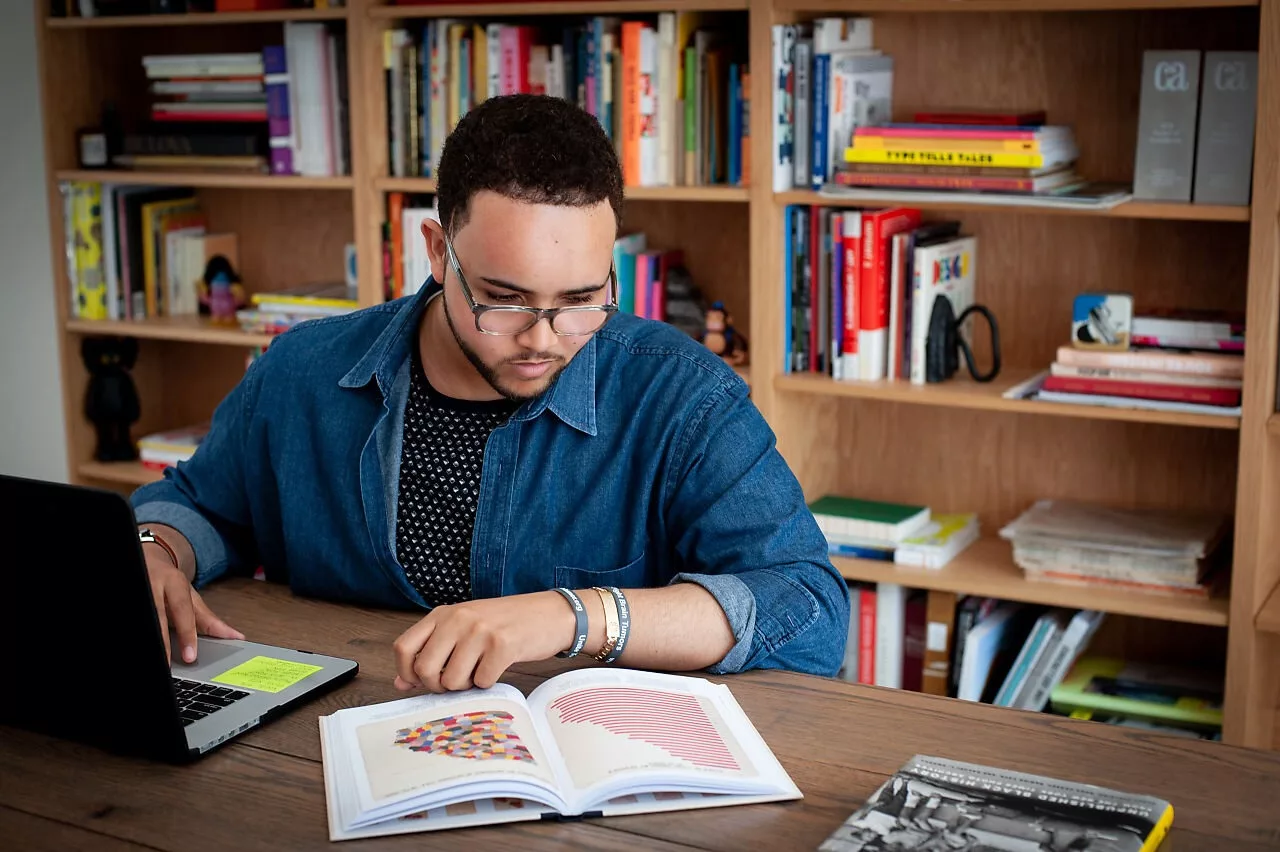This article is part of a series, The Vision of Advocates: Bold Insights From Advancing Racial Equity.
“Sometime, somewhere, men will judge men by their soul and not by the color of their skin.”
— W. E. B. Du Bois
We live in a world made better daily by design. From logos to branding identities to prototyping and everything in between, design makes our world more beautiful, more memorable, and more full. And yet, our current design is nowhere near the experience it could be.
It is commonplace for us to hear or read that we need more diversity in institutions like education, political offices, C-suites, and venture capital — because people in these roles should look like and have similar experiences to the people they are teaching, governing, directing, and investing in. There are also numerous studies and stories that say that having more diversity in these roles will increase the creative culture of our schools, government, companies, and startups. Having a diverse group of people leads to a diverse set of ideas.
Why, then, is it shocking to learn that only 3.5 percent of practicing designers are Black and only about 15 percent are non-White? Our world is literally being designed by White people. This lack of diversity has led to a singular set of ideas and creations. It can also lead to feelings of disconnect by many people who experience that only-one-in-the-room feeling as a person of color working in design.
Truly solving this problem is a massive undertaking and would need to be addressed on many fronts: education; systematic racism and cultural bias; sharing the stories of creatives of color; and more. It’s enough to make many people feel frustrated, overwhelmed, and discouraged — possibly even cause them give up entirely. But the world doesn’t need one person to do everything; we need many people doing one-things.
And Tré Seals is doing just that. In 2016, Seals launched Vocal Type to diversify design through what he refers to as the root of all good design: typography. Vocal is a type foundry to vocalize the voices and perspectives of minorities in the design community.
This is a type foundry for creatives of color who feel that they don’t have a say in their industry.
This is for the creative women who feel that they don’t have a say in their industry.
This is for the creative that is tired of being “inspired” by the same designs over and over again.
Vocal is for the creative that cares about telling the stories of the people we serve and the history of the industry we work in. Vocal is for the creative that wants to build a community — not a following.
At the time this article is published, all the fonts on the site were created by Seals, and his next step is to collaborate with other creatives of color.
And it’s not just creating fonts as a person of color or creating a community of people doing the same that is revolutionary about Vocal Type. The fonts Seals creates are derived from some of the most famous global protest movements, including the Memphis Sanitation Strike of 1968, the Suffragette Movement, the 1963 March on Washington, the Stonewall riots, and the 1970 Chicano Moratorium. One very special font, William, is based on the writings of W.E.B Du Bois.
Around the year 1900, Du Bois was asked to curate 500 photographs to show what the life of a Black American was like for the Paris World Fair. He purposefully chose images that would undercut the racist stereotypes in existence but felt that the photographs alone were not enough. He created 60 handmade data visualizations to accompany the photographs and detail reasons why Black America was being held back. The William font is based on this work.
I connected with Seals in Fall 2019 as we were preparing to launch Needle Movers: 52 Weeks | 52 Womxn | 52 Ways. We launched on November 5 and are featuring one womxn each week for 52 weeks — until the 2020 election — who has done (at least) one thing to move the needle towards equality. An illustrator is creating a likeness of each womxn each week. I reached out to Seals to purchase the Carrie font, based on the suffragette movement.
He told me the story of the William font and explained how this was a better font for us and more closely aligned to our mission, due to the photographs and illustrations Du Bois used. He was right. It was then that I was reminded of the special level of amazingness that a good designer brings to any project. He had just upleveled ours tremendously, in one conversation.
Many people I know would be honored to be at the end of their life and look back and know they had accomplished a fraction of what Tré Seals has. One of the most special parts of meeting him and getting to know his work is that you realize he is only 26 years old, and he has only just begun. Visit Vocal Type today to purchase one of these fonts or connect with Seals to support his important work.
See the rest of this series at The Vision of Advocates: Bold Insights From Advancing Racial Equity.







